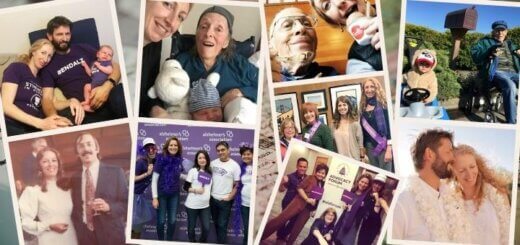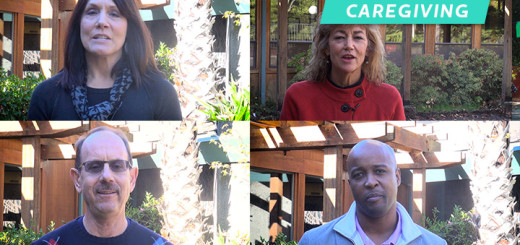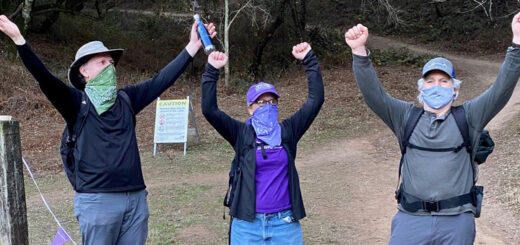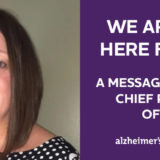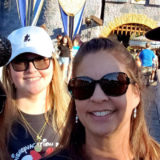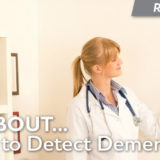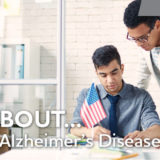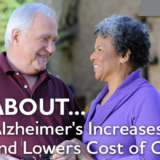Staying friends after Alzheimer’s
When people become diagnosed with Alzheimer’s or other dementias it’s common for some family, friends or neighbors to pull away. Not knowing how to act or what to say, they find it easier to stay away. However, friendships remain important for the person living with the disease, as well as their caregivers. Robert Lasater shares how he maintained his friendship with Richard, who was diagnosed with Alzheimer’s in 2013.
A common love of music
Robert and Richard met in the fall of 2012 at church. They bonded over their love of music and working on the church charity fund committee together. Robert didn’t know it then, but Richard was already showing signs of Alzheimer’s. Robert said, “Until Richard’s wife Linda told me that he had Alzheimer’s, I couldn’t even tell.”
“Richard was a geologist, who did essential work for United States Geological Survey, including the Apollo moon-landing program,” shared Richard. “He also had the gift of working with his hands, and, using that gift, he restored a classic 1958 model Porsche Speedster.”
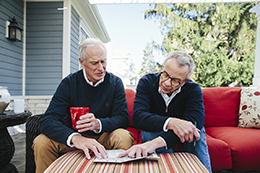
A nervous beginning
Robert’s first solo trip with Richard was in February 2013. “I offered to take Richard to the Legion of Honor (part of the Fine Arts Museums of San Francisco),” said Robert. “I was really worried about this trip because I didn’t know much about Alzheimer’s.
“I discussed my concerns with Linda, who was very helpful and understanding. She described Richard’s current state and condition and gave me a few suggestions.
“Still feeling a bit apprehensive on that Saturday morning, I showed up at their home to pick Richard up. I had carefully planned the route and made sure we took a route that went over the San Andreas fault. As a geologist, Richard still understood the significance of where we were, and we were able to have a simple conversation. He really appreciated that I drove this way.”
A pleasant surprise
Once at the Legion of Honor, Robert and Richard enjoyed the exhibits and were delighted that there happened to be an organ concert that day. Robert said, “Richard was able to engage other patrons in conversation, and I was able to step aside since he didn’t need my help.
“As we drove home, I felt really good. Mission accomplished: we had seen a significant painting, Raphael, Lady with a Unicorn, the organ concert was an unexpected treat, and I knew Richard had had a good time.”
Navigating choices
On his second visit with Richard, they went to Santa Cruz. This time, they stopped at a local restaurant. Not knowing that Richard could no longer make decisions for himself, Robert asked Richard what he would like to order from the menu. “When Richard couldn’t make a decision, I realized I had to make these choices for him,” said Robert. “I later shared my concern with Linda, but she made it clear that this was normal, and that he had lost this basic ability.”
Continuing the adventures
Robert took Richard on many more trips over the next several years. He made sure to take him to places he knew Richard would love. They went to Moffett Field and sat in planes from World War II. “He was so excited,” said Robert. “He was able to engage an older woman dressed as Rosie the Riveter in conversation without struggle or difficulty.”
They also visited Devil’s Slide, a particularly treacherous stretch of Highway 1 that goes along the coast of California. “It turned out that Richard was the go-to guy for the local media when landslides closed the highway,” said Robert. “When we arrived, Richard’s mood lightened dramatically. He got out and walked around, once again content, even happy.”
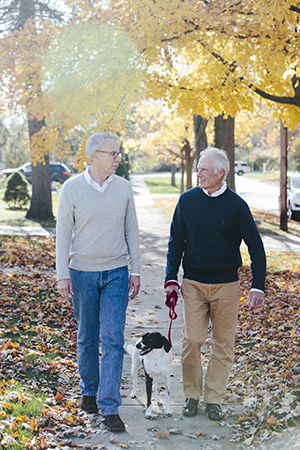
Feeling the impact of the disease
There came a day when Robert felt impacted by the disease, it was the day Richard could no longer remember who Robert was by name. “Linda asked me for a photo of myself,” shared Robert. “She needed to show Richard my picture in order for him to know who I was. I had heard that people with Alzheimer’s can forget the names of the people close to them, but I’d never experienced it first-hand.”
Turning point
Richard was still in good physical condition in May of 2018. He and Robert had gone on many walks which is why Robert decided to take them to the Palo Alto Baylands. “As we walked, I kept asking him if he wanted to turn around, and he said, “˜no,'” said Robert. “When we did turn around, I noticed that Richard was having a hard time. We found a bench and sat down, but it was hard to keep Richard still. He was starting to become agitated.”
After resting they had to continue their hike back to the car and Richard wasn’t getting any better. When they finally got back to the road, Richard expected to see the car. Unfortunately, it was a half mile further down. “Richard was furious,” shared Robert. “He was worn out, and I was really worried.”
Robert and Richard made it back to the car, but Richard continued to be angry. Later, Robert found out from Linda, that despite the anger Richard had a good time.
“There is a lesson here,” shares Robert. “When someone has Alzheimer’s there comes a point when you can no longer reason with them or explain things to them. They simply do not and cannot understand. You have to let their anger and agitation slide. It’s not personal, they simply do not understand.”
Their last outing together
The last trip Robert and Richard took together was in March of 2019. It was harder for Richard to walk now and the original plan of visiting the San Francisco Zoo was no longer possible. Instead, Robert took him to the beach. “Richard and I both had a great time,” said Robert. “But after I got home, I realized how very tiring it had been. I always had to be on guard as I didn’t want Richard to fall.”
They made it home from this trip without incident. Sadly, Richard’s disease progressed to the point that he and Robert would not be able to take another one. Currently, Richard is living in a care facility and no longer has the ability to go on outings.
A learning experience
“My friendship with Richard was a learning experience,” said Robert. “I feel I have been blessed. For many people, Alzheimer’s becomes a terrible burden, but for me that wasn’t the case.
“I had a good time being with Richard and taking him places. I saw first-hand what it means to have Alzheimer’s and I was able to learn about the disease.
While Robert’s time with Richard is full of happy moments and pleasant experiences, he also recognizes this isn’t true for Linda. “For Linda, it must have been heartbreaking to realize that each time he had a “˜good day,’ there would come bad days. And eventually a particular good day would end, and it would never come again.”

A much-needed break
Caregivers, like Linda, can benefit from a break or respite from caregiving. Having a trusted friend or family member spend time with their loved one with dementia gives the caregiver time to do things that can’t be done while they’re busy caring for their loved one. It also affords the caregiver a little time to care for themselves, which in turn makes them better caregivers.
“Robert’s friendship with Richard was important to Richard, and I know Robert also enjoyed the time they spent together, even though each visit had stressful elements,” shared Linda. “Most other friends would come for a visit or we might share a meal, but Robert’s gift of providing stimulating outings for Richard was all too rare.”
Participating in Walk
Robert’s friendship and experiences with Richard are why he has become so passionate about finding a cure for Alzheimer’s. “I’m proud to have been part of a Walk team that raised nearly $12,000 for the Silicon Valley Walk to End Alzheimer’s,” said Robert. “I feel like it is my calling to do whatever can be done to bring an end to Alzheimer’s and celebrate the first survivor.”
Whether you are seeking to support a person with Alzheimer’s or the person that cares for him or her, here are 10 ways you can help a family.
You can help support the movement to end Alzheimer’s by donating to Walk to End Alzheimer’s. Find your local Walk at alz.org/walk and donate today.
Learn More





